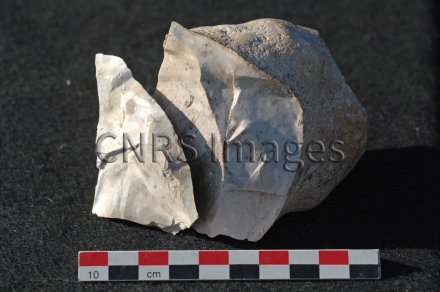Production year
2010

© Claude DELHAYE/CNRS Images
20110001_1170
Un nucléus et un éclat de silex avec un bord tranchant, trouvés sur un site de fouilles à Caours dans la Somme. Ce site préhistorique est une référence internationale, du fait de son excellente préservation au sein d'une séquence de tufs calcaires datés du dernier interglaciaire (123 000 ans). Le campement paléolithique, qui correspond à un site de boucherie néandertalien, offre une preuve majeure de la présence de l'homme de Néandertal sous un climat tempéré, au cours de l'optimum climatique du dernier interglaciaire, dans un milieu boisé. Cela remet en cause l'hypothèse de son inadaptation à la forêt.
The use of media visible on the CNRS Images Platform can be granted on request. Any reproduction or representation is forbidden without prior authorization from CNRS Images (except for resources under Creative Commons license).
No modification of an image may be made without the prior consent of CNRS Images.
No use of an image for advertising purposes or distribution to a third party may be made without the prior agreement of CNRS Images.
For more information, please consult our general conditions
2010
Our work is guided by the way scientists question the world around them and we translate their research into images to help people to understand the world better and to awaken their curiosity and wonderment.